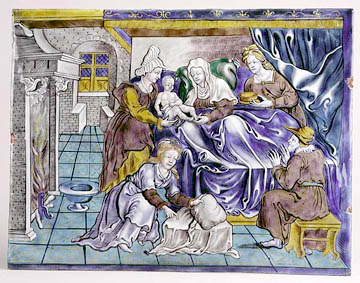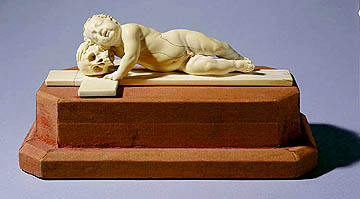
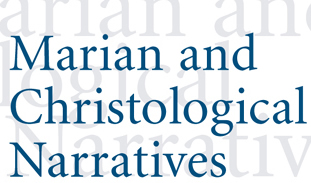




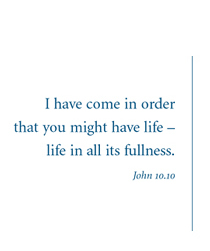
|
Birth of the Virgin Here the birth of the Virgin Mary is illustrated in a mid-16th century interior contemporary with the date of production. St. Anne is shown in bed, handing her newly born daughter to a midwife. A second midwife presents a bowl to St. Anne to wash, while a third one in the foreground attends to the swaddling clothes for the infant Mary. Joachim, seated at he foot of the bed, raises his hands in recognition of the miraculous scene. Though the Gospels do not record details surrounding the Birth of the Virgin, the New Testament apocryphon the Protoevangelium of James written in the second century does. It relates how after years of being unable to conceive, angels appear to Joachim and Anne to tell them that they will have a child. It also relays the moment of the Virgin’s birth:
|
|
Infant Christ Lying on Cross with Skull This object, made as a memento mori (souvenir of death), is jarring for its juxtaposition of an all too human infant and the notion of death. The infant Jesus peacefully reclines the length of the cross on which he will ultimately die. He rests his head on a human skull symbolic of his mortality and a reference to Golgotha (Hebrew for “the place of the skull”), the hill on which he will be crucified.
|
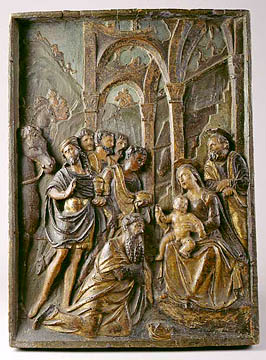 Adoration
of the Magi Adoration
of the MagiAttributed to Matteo Cesa of Belluno (c. 1425-c. 1495), or his son Antonio (active c. 1500), after Galeazzo Mondella, called Moderno (ca. 1467-1528/29) North Italian, mid-16th century Polychromed wood This wood relief by Matteo Cesa is after a bronze plaquette by Moderno based on a painting by Vivarini dating to circa 1445. The three kings arrive on horseback to adore the newly born Jesus who is seated on his mother’s lap. Mary raises her son’s right hand in a sign of benediction. Joseph stands behind them. The whole scene takes place not in a manger, but in the ruins of classical architecture: bits of sky are visible through the dilapidated vaults.
|
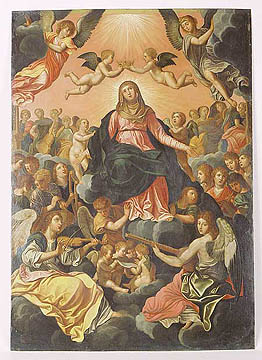 Coronation
of the Virgin with Musical Angels Coronation
of the Virgin with Musical AngelsAfter Guido Reni (1575-1642) Italian, 17th century (?) Oil on copper This image depicts the moment of Mary’s coronation as queen of heaven. The Virgin is seated on billowing clouds that appear to be borne by angels at her feet. Two cherubim hover on either side of her head bearing a crown. The scene is filled with angels engaged in various activities: playing musical instruments, participating in the pageantry of the coronation or simply witnessing it. Guido Reni was notable for the iconographic type of the Virgin Mary that he established. He painted numerous illustrations of her as a young woman, her veiled head, clear ivory skin and large clear eyes raised towards heaven. So popular were Reni’s depictions of the Virgin Mary that beginning in the seventeenth century they became an established Madonna type.
|
